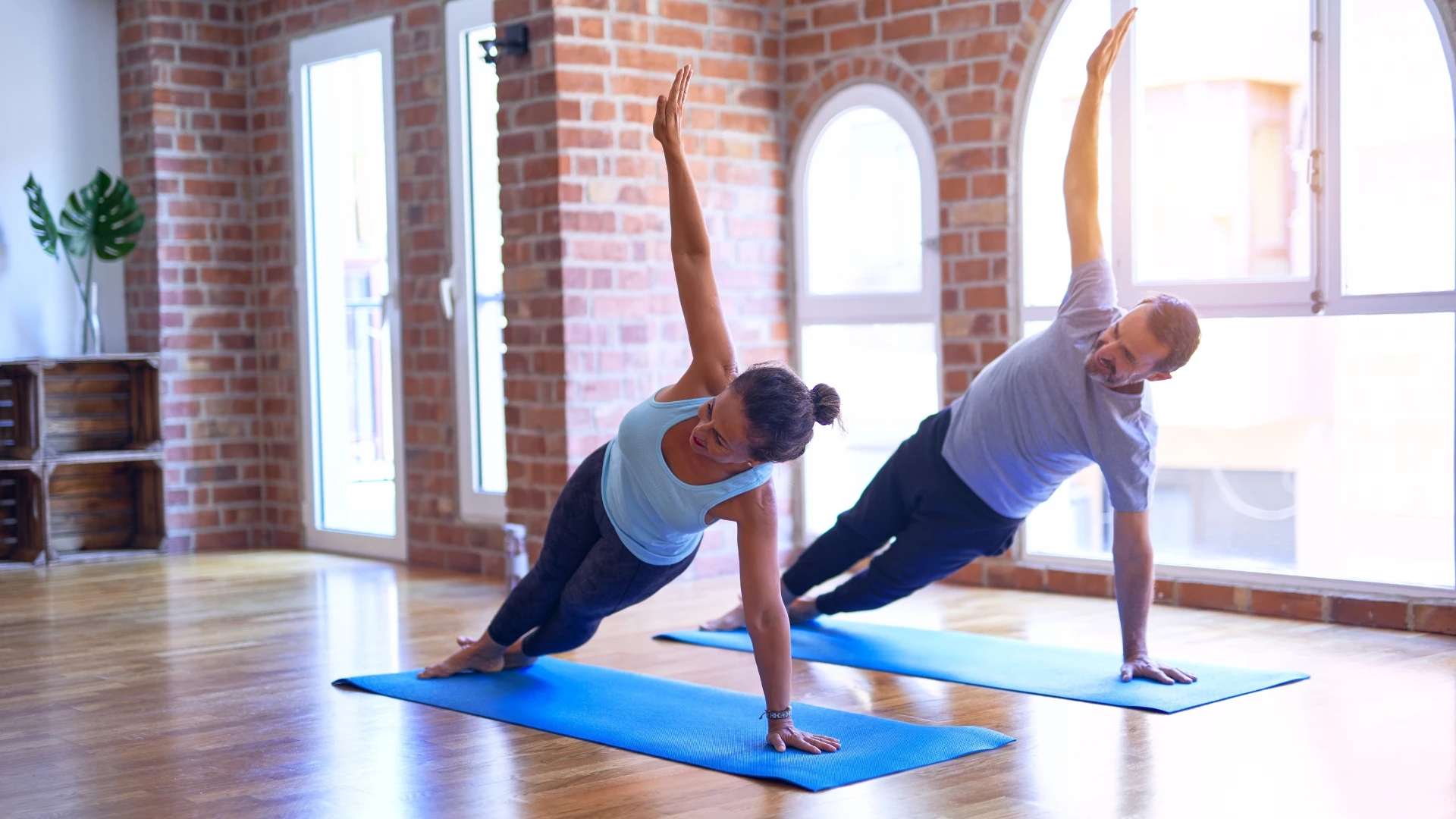Scoliosis: How to Manage a Curvy Spine

Article At A Glance
“How did I get this crooked?” Have you ever wondered this while looking in a mirror? Maybe you thought you were standing up straight, but then you notice from photos that you actually lean to one side. Your clothes don’t hang evenly. These might be clues that your spine has developed a lateral curve, a.k.a. scoliosis.
My mom developed osteoporosis several years ago and sustained two vertebral compression fractures, dramatically changing her posture. She now wears her shirts a size too big. This was a difficult change for her because she’s always been so stylish. In fact, she had an hourglass figure for most of her life! Being the fashion diva that she is, she says that baggy shirts make her look less crooked. (If you want baggy shirt fashion tips, reach out, and I’ll connect you!
Scoliosis at Any Age
There are many reasons your physique may change with age. Degeneration, fractures, injury, and inability to fully straighten a knee, for example, all contribute to uneven weight bearing through the spine.
What if you are young?
You just started puberty and notice that you look uneven in a bathing suit. You didn’t have an injury, you don’t slump; you are just being you! But you can’t stand up straight no matter how hard you try. Your spine is shaped differently than that of your friends. Being aesthetically unique isn’t fun during a time in life when body image and self-esteem are so fragile.
My mother is in her 80s, but it still bothers her that her posture has deteriorated. It should! A crooked spine is not ideal. If you could do something to prevent it from getting worse, wouldn’t you try? It could help you avoid unnecessary pain and associated health problems.
What Is an Ideal Spine?
Textbooks describe ideal posture as a position where the gentle curves of the spine balance the head above the pelvis such that a line dropped from the ceiling would fall through the ear lobe, the tip of the shoulder, the center of the hip, and knee, and anterior to the ankle joint. From behind, the ideal spine is straight. If the structure of your spine is bent or crooked, you will not be able to achieve this alignment despite your efforts to “stand up straight.”
Scoliosis: A Curvy Spine
Scoliosis is a term used to describe an abnormally curved spine. It is not caused by poor postural habits. Instead, it develops because of misshapen vertebrae within the spine itself. These deformed vertebrae will cause your spine to rotate and bend, eventually reshaping the back to appear scoliotic. According to the National Scoliosis Foundation, over four million people in the United States have scoliosis, and 30,000 surgeries are performed each year to correct this disorder.
Types of Scoliosis
There are different types of scoliosis:
- Idiopathic scoliosis (IS) is a diagnosis given when one or more vertebrae become deformed during growth, causing the spine to become curved. A few plausible theories on the etiology of idiopathic scoliosis can be found in The Society on Scoliosis Orthopedic and Rehabilitation Treatment (SOSORT). Theories point to a series of events that disrupt the process of vertebral growth and symmetry.
- Functional scoliosis is another reason for a curved spine. A bend may develop due to leg length differences or significant musculoskeletal imbalance. This type of scoliosis often resolves with lifts, physical adjustments, or stretching.
- Other causes of scoliosis mentioned above include significant degenerative changes, injury, fractures, and disease, which all contribute to a crooked spine (and perhaps the decision to wear baggy shirts!). These causes are known and are not considered idiopathic.
What Are the Treatments for Scoliosis?
For children or adolescents diagnosed with idiopathic scoliosis, the severity of the curve and the risk of progression will dictate the course of care. In general, the younger the child and the larger the curve (Cobb angle), the more aggressive the treatment. In some cases, a child will simply be monitored. For others, an intense regimen includes full-time bracing and exercise. For a few, surgery is necessary.
If you are an adult with scoliosis, you may have had it during adolescence, or you developed a crooked spine for other reasons. Treatment for you will be more conservative. Goals for treatment include adapting lifestyle habits to slow progression, managing pain if present, and reducing the curve through appropriate exercise. Scoliosis-specific exercises can reduce both the pain and the deformity. Simply treating the symptoms is ineffective.
Can Exercise Help Scoliosis?
Scoliosis-specific exercises are beneficial at any age. If the forces through your spine are uneven, the exercises you do should effectively address this imbalance.
Imagine an S-shaped spine from behind (there are many variations of curves according to the Rigo Classification System). The muscles in the concave part of the S will be shortened and weak, and the muscles in the convex portion of the S will be over-stretched and weak. Learning how to open the collapsed (concave) areas and strengthen the muscles of your inner ribcage from this optimal posture is one emphasis of physiotherapeutic scoliosis-specific exercises (PSSEs). Finding a practitioner in your area knowledgeable in PSSE will help you to manage your scoliosis better.
In the meantime, core strength, in general, is beneficial. Scoliosis is considered an unstable condition, and more often than not, strengthening and stabilization are warranted.
How to Manage Your Curvy Spine

- Continue to exercise! Just be smart about the sport you choose. Twisting and overly bending the spine may be contraindicated. Choose exercise that makes you feel good afterward and promotes balance in the body, such as recreational swimming, yoga, Pilates, and tai chi, to name a few.
- Sit up straight. Notice if you tend to slump to one side when you sit, if you carry your bag on the same shoulder, or if you always lean on the same hip. These habits won’t cause scoliosis but may contribute to strain if done repetitively over time. Do your best to stay centered in your daily activities.
- Practice good body mechanics. If your activities require that you bend to the floor, do so with a straight spine. Bend your knees! This includes when you practice yoga poses such as Seated Forward Bend Pose (Paschimottanasana) and Standing Forward Bend Pose (Uttanasana).
- Love your body. If you are unsure how to care for your unique spine, seek guidance. Special spines deserve special care!
Also, read...
Yoga for Back Pain: Are Your Tech Devices Ruining Your Posture?
Hyperkyphosis (Dowager’s Hump) Carries Similar Risks as Osteoporosis, Research Finds
Yoga for Posture Improvement – Easy Iyengar Yoga Tip with Julie Gudmestad
Related courses

Christine Carr, c-IAYT, eRYT 500 has been a physical therapist for over 20 years. In her youth, she was constantly hurting herself. This motivated her to learn how to recover from injury and heal herself, naturally. She loves to learn. Studying the human body, and mind and how they function together is exciting to her. She has a diverse academic background with experience that includes orthopedics, yoga, and functional medicine. She enjoys teaching others how to recover from injury, manage their condition, and improve their function and performance.
Christine enjoys any and all sports available in this beautiful area or kicking back with a good book in her spare time. She has recently started gardening, though she said she has much to learn!



